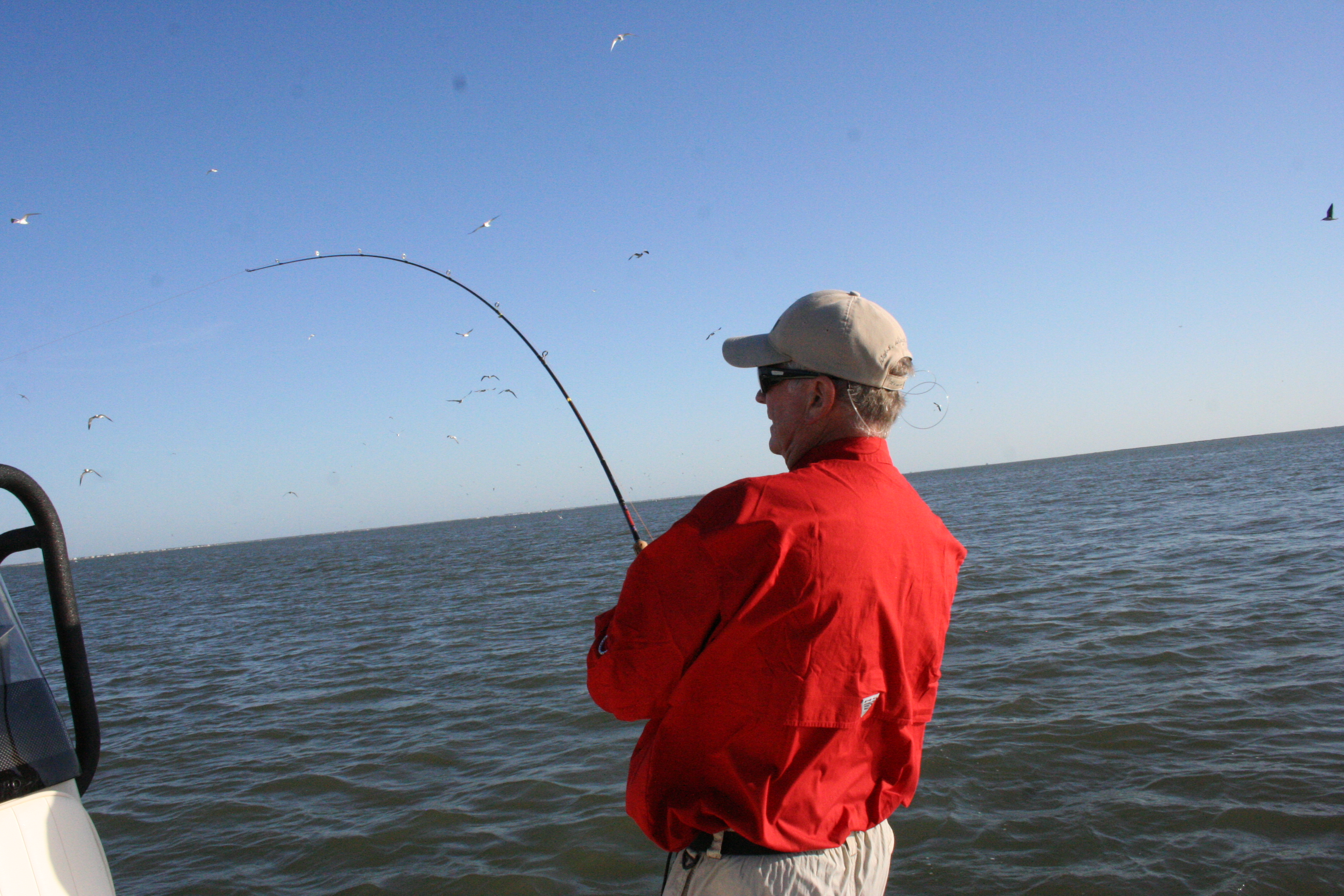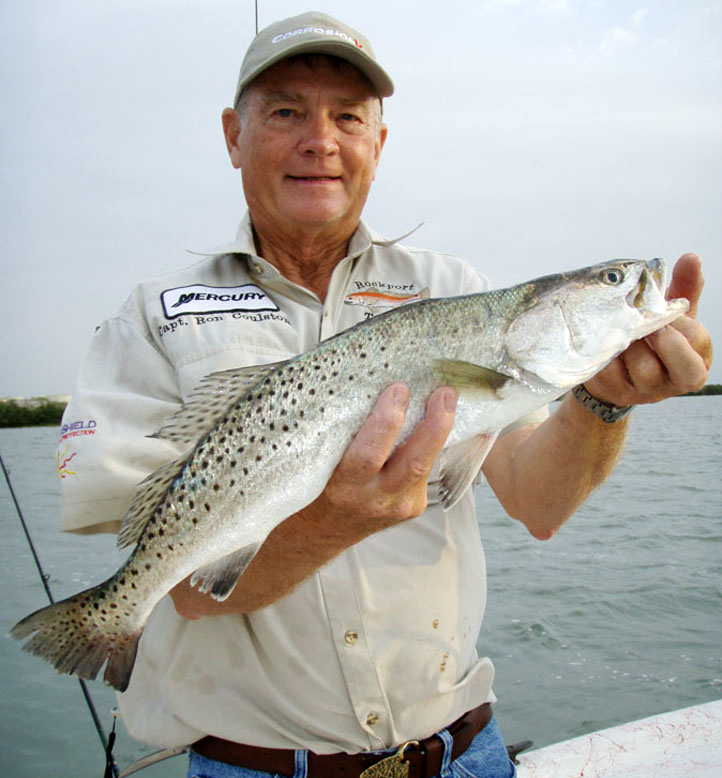It’s the first rule in fishing: fish where the fish are.
However, sometimes despite our best efforts, the fish simply aren’t around. In those instances, we as anglers must stack the deck in our favor, and the easiest way to do that is to get our hands a little dirty.
Chumming often is thought of mainly as an offshore tactic but in Florida and in some other Gulf coast locales it widely is used for inshore situations. The method can take a variety of forms but the approach is the same as you attempt to lure angling targets with a concoction consisting of dead shrimp, bait fish or other small edibles that can be dispensed in a number of ways.
A July 1965 report from the Texas Parks & Wildlife archives offers a glimpse at bay chumming, most of which holds true to this day.
“Menhaden, anchovies, small sand trout and croakers can be cut up or run through a meat grinder to make chum. Trickled slowly but steadily overboard from an anchored boat, carried along the side of a good reef by the current, the chum line will almost certainly bring fish to the baited hook and have them excited enough to bite,” according to the report.
The description also detailed a common way to find your own live bait with a cast net.
“Menhaden, mullet, silversides, mollies, pupfish, killifish, small crabs and shrimp are common around bay edges, sometimes only a few steps from the shoulder of a road. Taken home and frozen whole or ground into meal, they make good chum and also serve to pre-chill your portable ice box on the way to the bay,” according to the report.
Texas inshore saltwater fishing outstanding during fall, winter months
The report also discussed how to entice at least one species that typically lurks near bulkheads, oil wells, piers and other manmade structure.
“If the sheepshead won’t bite, try exciting them into a feeding mood by scraping the barnacles and other crusted animals off the pilings or rocks with a long handled shovel or hoe taken along purposely for this trick.”
There’s more than one way to skin a cat as the old saying goes, and in the case of chumming, it’s all a matter of preference.

I had the opportunity to use chum bait bags packed with ground shrimp on an excursion out of Key West a couple of years ago with great success. Patch reefs are common in Florida and typically teem with fish, but during our outing the angling was slow – until the chum bags were flipped over the side. As the chum slowly crept from its putrid hiding spot the bite almost instantly spiked. We went from flipping small jig heads tipped with shrimp to no avail to hooking up on every cast before the lure could even get near the underwater structure, catching yellowtail snapper – which typically are wary of heavier line – and a variety of other reef dwellers.
The key to chumming is concentrating fish. The best way to do that is to create a scent trail that will maximize how many scaly denizens are attracted. That means however you put out chum, make sure it is allowed to work with the current and is above whatever location you’re working.
There are a number of tested approaches to chumming. The easiest on a shallow flat is to simply toss diced shrimp or bait fish into the water and wait a little while. The downside to this method is you may attract gulls and other birds that could also scoop up live or dead baits you throw out.
Other ways to brew a foul attractant are to make your own frozen mixture by plopping your bait choice into water and freezing it to make a block that can be toted along in an ice chest. I’ve seen anglers who stuffed a milk carton halfway with diced bait fish and filled the rest with water before sticking it in the deep freeze. They then simply tied a line to the handle, popped the lid and threw it in the water when it was needed.
Another approach is to use a chum bag. There are specially made bags of mesh that are relatively inexpensive, but you also can use whatever you may have laying around such as a burlap sack or other porous container. You simply place your frozen or fresh offering in the bag and cinch it closed before dumping it overboard tied to a line.
Chumming will bring in anything that likes eating other critters – which can be irritating if less desired species such as hardheads or gafftops move in. However, many anglers dismiss the effectiveness of using chum for sought species including redfish, trout and even flounder. The two former species will gang up around any food source so chumming makes great sense, especially is the bite has slowed. Flatfish also will come to the smell of dead bait, especially if you’re fishing along drop-offs or small variances in terrain. Many anglers also may not consider their angling pursuits to include chumming but anytime you sling out multiple rods with cut bait of any form on the other end you technically are offering up chum.
One sure way to find speckled trout or redfish is to follow what veteran anglers term “slicks,” which are produced by feeding fish just below the surface eating shrimp or small bait fish and essentially are moving chum balls. The game fish eat until they can’t anymore and have to spit out some of their prey, while parts of some of the bait fish and oils also will escape through the gills of trout and reds. This will leave a sheen on the surface, which sometimes can be large and is best discerned with a pair of polarized lenses. Seasoned anglers also will smell around when winds are up for what hints of watermelon, the aroma that emanates from these slicks.
The Parks & Wildlife report summed things up nicely when discussing the implications of chumming.
“It may mean the difference between success and an empty stringer,” the report states.
I couldn’t agree more.
Texas fishing calendar: In September head to Aransas Bay for flounder
Artificial lures and chumming
Live bait almost always is the best choice to throw while fishing around chum but there are a number of artificial lures that can be as effective. Among the best are scented offerings such as Berkley’s Gulp! and Powerbait, which mimic the smell and shape of a number of bait options including shrimp and mullet.
Fish reacting around chum typically inhale baits, but you can ensure that you hook a fish in the corner of the mouth by using a circle hook. I’ve observed a number of guides augment their standard tackle by using the hooks typically used on live croakers and other bait fish. It really works, too. The circle hook will cut down on the number of fish you gut hook, especially those undersize specimens you intend to throw back. Simply hook a bait through the lead end with the circle hook and throw it as you normally would.
I’ve also seen guides add beads for effect, which may not really work to entice a fish but looks cool, and also thread on a popping cork ahead of plastic imitations. The sound especially can work when you’ve chummed up a spot and are hoping to entice a school of speckled trout or redfish – or both.
Among the best places to use chum is around the almost never-ending channels formed by the Intracoastal Waterway that surround flats areas along the coast. The current along the deeper terrain works well to spread out your chum, including on nearby grassy shallows, and there could be hungry flounder lurking along the edges, too.
Using chum isn’t an exact science, but it doesn’t have to be. With a little work, you can find the right mix that will bring success.


















